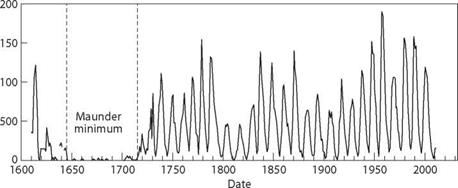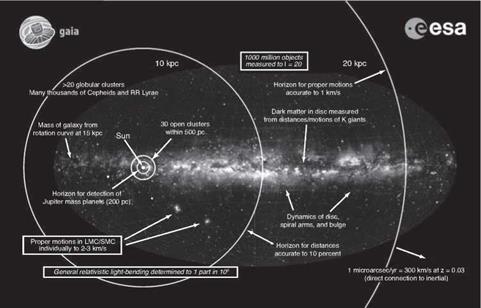By the late twentieth century, Mars emerged as the familiar landscape we recognize and cherish. Unlike Mercury, Venus, or even our own Moon, Mars has come into full relief. It is as if a Mercator’s projection of Mars has lifted from its paper and rounded into a globe with tangible polar ice caps, soaring volcanoes, immense rift valleys, recognizable craters, and plains of crescent barchan dunes. Our robotic partners have added these features of Martian terrain to the iconic landscapes that preoccupy, and persist in, the human imagination. Images sent back by Mariner, the Viking Orbiters, Mars Global Surveyor, and Mars Reconnaissance Orbiter allow us to turn the globe of Mars in our hands, so to speak, and trace the planet’s volcanoes, its broken and unzipped canyons, and its ancient and desiccated river beds.3 With the Mars Exploration Rovers Spirit and Opportunity, we’ve explored in fine detail Victoria, Gusev, and Endeavor craters and captured our closest view yet of the red planet. Asked to name a landmark on the Moon, most people would probably answer the Sea of Tranquility, the landing site of Apollo 11. A few might mention the lunar Apennines, landing site of Apollo 15. But ask most fifth graders about Olympus Mons, Tharsis Bulge, or Valles Marineris and they not only readily reply, but also immediately envision these remarkable topographic features.
With a fleet of NASA planetary missions perusing the Solar System, by the late twentieth century “near space” emerged as a set of familiar landscapes. Serge Brunier comments that “the deserts of Mars and the rings of Saturn are as familiar to us today as the most awe-inspiring landscapes of our own planet.”4 Cultural geographer Denis Cosgrove similarly has observed that the “differentiated surfaces” of the Moon, Mercury, and Mars “are increasingly present” to us and have become a valued aesthetic to scientists and general audiences alike. As the planetary landscapes of our Solar System settle into the imagination, Cosgrove explains that this terrain has evolved into places of “detailed human understanding and care.”5 He equates our familiarity with lunar or Martian panoramas or the surfaces of Saturnian and Jovian moons with the crude maps and charted rocks that seafarers used to cross the open ocean. For the earliest mariners, horizon markers, if only the forbidding and jagged edge of a dangerous coast, would have been a welcome sight, waypoints indicating location and direction. Even a handful of recognizable land or sea features made the seemingly blank and formidable marine expanse less threatening and more navigable. Passes and shorelines, mapped and remembered, altered our relation to Earth’s globe. The currently unfolding planetary geographies are again reconfiguring our sense of place, this time in relation to the Solar System itself.
Of all the planetary geographies beyond those of Earth, Mars’s iconic features are perhaps the most familiar and deeply embedded. Viking 1’s initial glimpses of a rock-strewn plain rising to a salmon-colored sky surprised and delighted us, as did the frost – covered rubble of Utopia Planitia photographed by the Viking 2 Lander. With its Arizona-like desert terrain, and dust devils dancing lazily over seemingly endless rock fields, Mars has become a place we know, remember, and dream of exploring. Even now, teams of scientists practice working in Mars-analog environments such as the Mars Society’s Desert Research Station in Utah, or the barren and desiccated salt pans of Chile’s Atacama Desert. In a valley near the Atlas Mountains in Morocco, scientists are studying the landscape in preparation for ESA’s ExoMars mission.6 Research at these sites is focused on developing new technologies necessary for exploring Mars with a geologist’s hands and eyes.7 Until a mission manages to place astronauts on the Martian surface, we linger over coffee table volumes from which spill its alien terrain of jagged and scalloped craters, hanging canyons, and high clouds clinging to volcanic summits.
Jim Bell’s Postcards from Mars vividly illustrates why we are so captivated by the red planet. Multi-page panoramas tumble open to a sunset glimpsed by Spirit from the rim of Gusev Crater, and of Opportunity’s sweeping view of Endurance Crater, with its angular dunes a meter in height. A day on Mars, or Martian sol, is not so different from that on Earth, about 24 hours and 37 minutes. Like Earth, Mars has seasons due to its similar axial tilt, polar ice caps, and a year of 687 days. Bell, however, clarifies that while its landscape in appearance resembles Earth’s desert terrain, atmospheric conditions on Mars are nothing like the world we inhabit. Having served as the landscape photographer and primary camera operator for the MER rovers, Bell was responsible for processing and interpreting images from Spirit and Opportunity’s panoramic cameras or pancams. Of the Mars he has so patiently and tirelessly photographed and rendered, Bell writes: “There’s an ‘I’ve seen that place before’ feel of looking out the window across a long drive in the desert somewhere. Rocks, hill, sky—it’s all very Earthlike and comforting, in a way. But it’s an illusion. It’s 30 to 50 degrees below zero (°C or °F, it doesn’t matter) on average out there; the air is almost entirely carbon dioxide, with only a trace of oxygen; and it hasn’t rained in something like 2 to 3 billion years, if ever.”8
Panoramas taken by the rovers’ pancams, specially designed to capture Mars in spectacular detail, called for hundreds of photos to be carefully stitched together for a single panoramic view.9 “I wanted them to be postcards—views showcasing the beauty of the natural environment that we now found ourselves in,” writes Bell. “We even set the first few mosaics up to be rectangular in shape, just like postcards.” Photocomposition requires proper interpretation with regard to color under Martian sunlit conditions and is driven by both aesthetic and scientific objectives.10 For instance, in the first image Spirit took of its landing site, Bell noted scuff marks in the Martian soil made by cables that retracted the lander’s airbags: “The scratches looked very strange, though, like someone had taken a carpenter’s plane and dragged it across the ground, so that pieces of soil were lifted and curled up like wood shavings. A place that at first glance seems commonplace turns out to be quite alien after all.” Large, sweeping vistas taken by Spirit and Opportunity have afforded greater understanding of water deposition, erosion, as well as aeolian processes, and further demonstrate that Mars is a planet of ever-evolving geomorphology.11 When, for instance, the rover team wondered about the frequency of dust devils, Bell ordered the rovers to lie in wait and record what might pass the camera lens: “Within days we started catching dust devils moving across the plains in the images. Over the course of months of occasional monitoring we saw hundreds of them. . . . As the plains got warmer with the advance of the seasons, it became clear that these mini-storms are a major way that dust gets moved around on Mars.”12 Fortuitously, the dust devils happened to clean the rovers’ solar arrays, inadvertently extending their lives for years.
Driving the rovers over broad stretches of terrain reminds us of the grave challenges of Martian exploration, for robotic or human explorers. During the fall of 2004, when the Sun had shifted farther North and its light was less direct, Spirit was trekking as far as possible each day, depending on battery reserves. Bell recalls, “When we drove or parked, we had to try to bask, lizard-like, with the panels tilted as much into the Sun as possible to maximize our power supply.” He recounts how the rover team targeted preselected “lily pads” on slopes that would catch the most sunlight. Late in 2005, while parked on Husband Hill, Spirit took some time away from its geological scrutiny to look upward and make a few astronomical observations. There, along with the rover, Bell recorded “curving star trails, potato-shaped moons moving in the night, shooting stars, the setting Sun, and the rising Earth [as] familiar, yet alien and evocative.”13
It was detailed images of the Martian landscape sent back by the Viking orbiters and landers that enticed Steve Squyres to become a planetary scientist. Principal investigator for the MER mission, Squyres recounts how in 1977, as an undergraduate at Cornell University, he became entranced with Mars’s stark terrain. He signed up for a graduate seminar to be taught by one of the Viking project scientists and ended up gaining access to the “Mars Room” in Clark Hall that housed the pictures streaming in from Viking. While some of the images had been collected into notebooks, the majority, Squyres noted, “were on long rolls of photographic paper, stacked on the floor or still in their shipping cartons.” Looking to uncover in a matter of minutes some hook for a course assignment, Squyres quickly became captivated by the alien landscape unfolded before him in photos that he realized even scientists had not yet digested. He found himself poring over image after image—for the next four hours. “The planet that I saw in those pictures is a beautiful, terrible, desolate place,” wrote Squyres, who recalls stepping “out of that room knowing exactly what I wanted to do with the rest of my life.”14 Squyres’s journey to exploring Mars resulted in NASA’s twin rovers Spirit and Opportunity that in turn have captivated the world’s next generation of planetary scientists and explorers.














